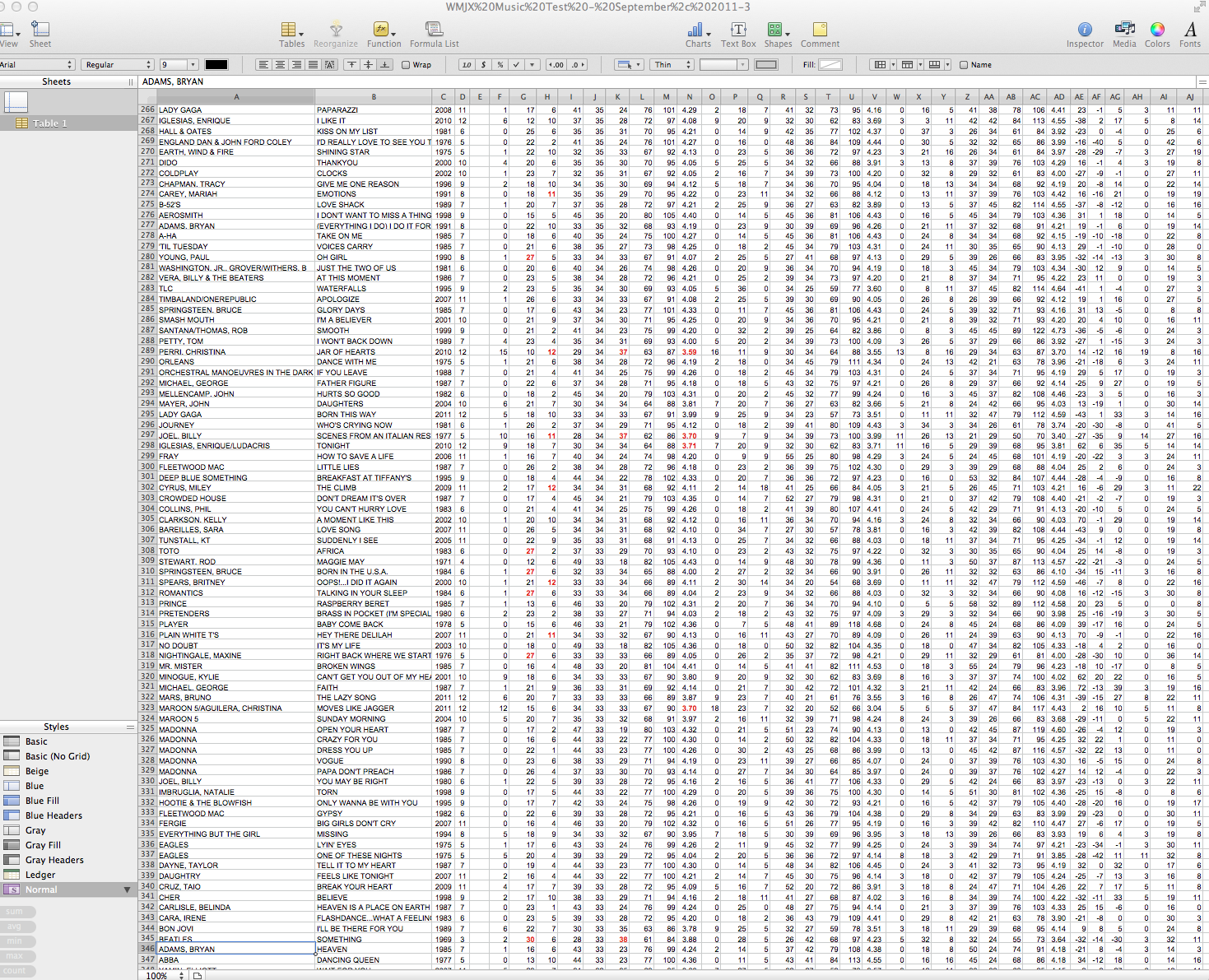 This should be simple. Just play the songs in the order in which they tested, right?
This should be simple. Just play the songs in the order in which they tested, right?
That theory might work well in a format like Classic Rock or Classic Hits where you play one type of music from a finite era. Your top ten testing songs should also be your ten most played. Maybe.
Not so fast with AC. An AC station that has market tenure and a strong brand may very well be playing songs from the 60’s, 70’s, 80’s, 90’s, 00’s and the Teens (we finally have a name for this decade). Everyone from Louis Armstrong to Demi Lovato with Michael Jackson, Bon Jovi and Hootie in between. When listeners vote for songs in an auditorium test they’re not asked whether they want to hear a particular song on their favorite AC station, they’re just asked whether they like it a lot, a little or not that much. And if they’ve ever heard it before.
The next step is where science meets art. The successful interpretation of these numbers. Some researchers and consultants use a formula in which you add up the “Like a Lot” and “Like Some” votes and call that “Total Positives.” Then subtract the negative and unfamiliar votes and rank the songs. That’s the science part. Easy.
How often, though, is the easy way the best way? Let’s look at the art part. If you take the process a few steps further and think about what the votes really mean to a listener, you see that the difference between “Like Some” (“Yeah, I guess it’s okay”) and “Dislike Some” (“Meh, not all that much”) is like the difference between 2 and 3 on a scale of 1 to 4. Not a passionate difference. If instead, you ignore the non-passionate votes and just look at the 4’s and 1’s…the “I Love it” and “I hate it” votes…you get a much clearer picture of audience reaction in the PPM era of split-second button pushing. Look at the spread on each song between the 4 votes and the 1 votes. That’s the percentage of listeners who would crank the station up compared to the number who would blow it off if that song were played.
Then there’s another step. The fit. Tastes change from year to year, and artists and songs that you would never have dreamed of playing on an AC even two years ago can have some of the top-testing songs today. The most important factor in the “fit” test is that the person who is making the final decision on what gets played and what doesn’t is not the out-of-town corporate person or consultant, but the person in the market, on-site, who has the sound of the station seared into in his or her brain. That would be the Brand Manager, better known as the Program Director.
